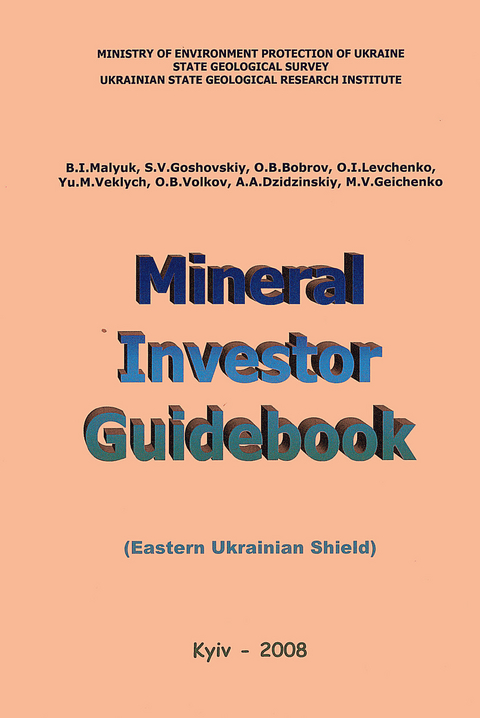
Mineral Investor Guidebook
(Eastern Ukrainian Shield)
Seiten
2008
Schweizerbart'sche, E. (Verlag)
978-3-510-65419-2 (ISBN)
Schweizerbart'sche, E. (Verlag)
978-3-510-65419-2 (ISBN)
By various estimates, including those of US Geological Survey, the mineral wealth of Ukraine is high enough. Production from mineral raw materials accounted for 40% of Ukraine’s GDP in 2000, and about 60% of the country’s budget revenues. Despite the significance of mineral raw materials to the country’s economy, Government support for the geological sector has greatly decreased since the dissolution of the Soviet Union. At the time of the breakup, 41 geological organizations that employed 58,760 persons were state supported; by 2003, the number of state-supported organizations had decreased to 11 and the number of workers to 9,839. The level of Government funding for geologic work had been reduced by more than 70%. Owing to the lack of financial support, the country was experiencing a shortage of needed specialists and was lacking up-to-date technology and equipment. Whether the country mineral resources are foreseen to be developed extensively essentially depends on the non-government investments involved. The own experience of Ukraine and examples from other CIS countries strongly suggest for the best country interests in the foreign direct investments provided by the senior and junior mining and exploration companies of various origin including mainly those listed on the major world stock exchanges. However, it becomes more and more evident that mineral resources FDI advantages and efficiency do strongly depend not only on the general investment environment in Ukraine but also considerably rely on the knowledge base available for the foreign investors. Besides the common regulation restrictions and data scarcity, in case of Ukraine and other CIS countries the data access is thought to be essentially complicated to the foreign companies simply due to the language barrier. Specifically, most of geological information in Ukraine is being recorded in Ukrainian with minor amount of Russian items from the past years. Thus, the persistent FDI provision requires facilitating the normal documents filed in various geological entities of Ukraine to be presented in English at least. While a number of geological data being permanently staked in the country research, prospecting, exploration and mining units concerns the mineral details and their Ukrainian-English translation could be the matter of particular negotiations between the data holders and the interested applicants, some principal items seem to be of primary importance and definitely should be issued in English and accessible to the broad community of the foreign investors providing the backbone assets for their subsequent mineral activities. Apparently, these items are likely to be comprehensive enough to make possible robust foreign investor’s decision whether foreseen mineral applications in Ukraine would provide advantages comparable to the benefits are thought to come from the vesting elsewhere. The mineral FDI provision therefore requires multi-purpose English-fashion geological information which integrates general mineral patterns and highlights specific mineral targets at the same time. In our mind, these conditions can be maintained on the ground of the State Geological Map of Ukraine in the scale 1:200 000.
| Erscheinungsdatum | 18.12.2017 |
|---|---|
| Sprache | englisch |
| Maße | 210 x 290 mm |
| Gewicht | 280 g |
| Themenwelt | Naturwissenschaften ► Geowissenschaften ► Geologie |
| Naturwissenschaften ► Geowissenschaften ► Geophysik | |
| Schlagworte | ferrous metal • Radioactive • rare metal • trrace metal |
| ISBN-10 | 3-510-65419-6 / 3510654196 |
| ISBN-13 | 978-3-510-65419-2 / 9783510654192 |
| Zustand | Neuware |
| Haben Sie eine Frage zum Produkt? |
Mehr entdecken
aus dem Bereich
aus dem Bereich


